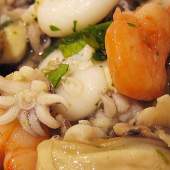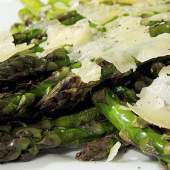Kwanzaa

“The [Kwanzaa] holiday will…be engaged as an ancient and living cultural tradition which reflects the best of African thought and practice in its reaffirmation of the dignity of the human person in community and culture, the well-being of family and community, the integrity of the environment and our kinship with it, and the rich resource and meaning of a people's culture.”
– Maulana Karenga
“If you have a purpose in which you can believe, there's no end to the amount of things you can accomplish.”
– Marian Anderson
The seven-day celebration of Kwanzaa is held annually from December 26 through New Year’s Day. Its name is derived from the Swahili phrase matunda ya kwanza, which means “first fruits.” It was inspired by Zulu and Ashanti harvest celebrations.
As holidays go, Kwanzaa is a relatively new one; it was created in 1966 by Dr. Maulana Karenga, a major influencer in the Black Power movement, with the goal of connecting African Americans more closely with their African roots, traditions, and history. The festival, which is cultural rather than religious, revolves around seven principles (known as the Nguzo Saba), one for each day of the holiday: unity (Umoja), self-determination (Kujichagulia), collective work and responsibility (Ujima), cooperative economics (Ujamaa), purpose (Nia), creativity (Kuumba), and faith (Imani). These principles are marked with the lighting of the kinara, a candle holder similar to the menorah in the Jewish faith; it holds seven candles: three red, three green, with a black candle in the center, one of which is lit each night of the holiday. These colors have a special meaning: green represents the land of Africa, red is for the noble blood that unites everyone of African descent, and black is for the people. These are used in table and home decorations and also in festive attire.
Of course, you can’t really have a celebration without food. And after gifts, mostly concerning African history and culture, are exchanged, Kwanzaa certainly obliges. On December 31, the holiday culminates in a feast called Karamu. What is served? Well, as the Food Network tells us, there are some foods that are traditional: “the mazoa, fruits and vegetables symbolizing the bounty of the harvest (usually foods emblematic of the African diaspora, such as okra, yams, squash, sweet potatoes and bananas), alongside the muhindi, ears of corn representing each child still remaining at home. These are accompanied by the kikombe cha umoja (a communal chalice).”
Beyond that, there is a broad range of foods that are acceptable for Karamu; most of them are rooted in family heritage and traditions, and can represent all parts of America and the African diaspora. These can include everything from curries and soul food such as collard greens, macaroni and cheese, black-eyed peas, and catfish; to Creole specialties such as jambalaya, gumbo, and jerk chicken; to one-pot stews and jollof rice from West Africa; and also foods that are endemic to the American South, such as plantains, cornbread, fritters, biscuits, and fruit cobbler. It’s clear that whether a dish is straight from an African country or was brought here by immigrants doesn’t much matter – the point is to emphasize family and bring a community together to share.
Needless to say, if you are invited to a Kwanzaa feast, you will eat very well!
During Kwanzaa, it is proper to greet other celebrants with “Habari Gani” (“What’s the news?”); the response depends upon the principle being observed on that day (Umoja, Kuichagulia, etc.).
Or, you can just say…
Joyous Kwanzaa!





